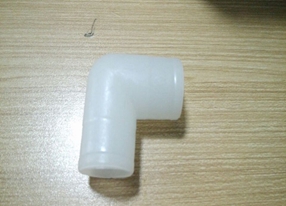Chicken Processing Equipment for Scalder and Plucker Efficiency and Quality Enhancements
Nov . 09, 2024 11:17 Back to list
Chicken Processing Equipment for Scalder and Plucker Efficiency and Quality Enhancements
The Evolution of Poultry Processing Chicken Scalders and Pluckers
In the modern world of poultry processing, efficiency and welfare are of utmost importance. One of the critical stages in processing chickens is the scalding and plucking phase. This procedure not only impacts the quality of the final product but also affects the overall operational efficiency of poultry processing plants. In this article, we will explore the significance, technology, and advancements associated with chicken scalders and pluckers.
The Scalding Process
Scalding is the first step after slaughter. The primary purpose of scalding is to loosen the feathers from the chicken, making the subsequent plucking process much more effective. Traditionally, this was achieved by immersing the carcass in hot water, usually maintained at temperatures around 60 to 65 degrees Celsius (140 to 149 degrees Fahrenheit). The duration of immersion is critical; too short, and the feathers remain firmly attached; too long, and the meat can be damaged.
Modern chicken scalders have evolved significantly. Today, there are both immersion scalders, which involve submerging birds in hot water, and air scalders, which use steam to heat the exterior of the chicken. Air scalding has gained popularity due to its advantages in terms of energy efficiency and improved meat quality. By introducing steam instead of water, the risk of cross-contamination is reduced, and the moisture level in the flesh is preserved, resulting in better-tasting meat.
The Plucking Process
Once chickens are adequately scalded, they move on to the plucking stage. Historically, plucking was a labor-intensive process, relying heavily on manual labor, which was not only inefficient but also could lead to inconsistencies in plucking quality. With the advent of technology, mechanical pluckers have transformed the industry.
chicken scalder and plucker

Mechanical plucking machines typically feature rubber fingers or pegs that mimic human fingers to remove feathers without damaging the skin. These machines can handle thousands of birds per hour, drastically reducing processing time. Moreover, advancements in the design of plucking machines have improved feather removal efficiency and reduced the likelihood of carcass damage, which is vital for maintaining meat quality.
Innovations and Sustainability
The poultry industry is also experiencing a drive for sustainability, leading to innovations in the scalding and plucking processes. Companies are now integrating energy-efficient systems and utilizing sustainable materials in their machinery. For instance, some manufacturers focus on developing low-water scalding options, which significantly reduce water usage—a critical factor, considering global concerns over water scarcity.
Moreover, adopting advanced technologies such as automation and artificial intelligence is becoming commonplace in processing plants. These technologies enhance monitoring and control over the scalding and plucking processes, resulting in higher yields and reduced waste. For example, sensors can monitor water or steam temperature in real-time, ensuring optimal conditions for scalding, thereby enhancing feather removal efficiency and overall quality.
Conclusion
In conclusion, the evolution of chicken scalders and pluckers reflects the changing needs of the poultry processing industry. As consumer demand for high-quality poultry products continues to rise, so too does the necessity for efficient and humane processing methods. The integration of advanced technology and sustainable practices in scalding and plucking not only enhances operational efficiency but also contributes to better product quality and improved animal welfare standards. As the industry moves forward, continual innovation in these areas will be crucial for meeting the challenges of the future—ensuring a sustainable and responsible approach to poultry processing.
-
Hot Sale 24 & 18 Door Rabbit Cages - Premium Breeding Solutions
NewsJul.25,2025
-
Automatic Feeding Line System Pan Feeder Nipple Drinker - Anping County Yize Metal Products Co., Ltd.
NewsJul.21,2025
-
Automatic Feeding Line System Pan Feeder Nipple Drinker - Anping County Yize Metal Products Co., Ltd.
NewsJul.21,2025
-
Automatic Feeding Line System - Anping Yize | Precision & Nipple
NewsJul.21,2025
-
Automatic Feeding Line System - Anping Yize | Precision & Nipple
NewsJul.21,2025
-
Automatic Feeding Line System-Anping County Yize Metal Products Co., Ltd.|Efficient Feed Distribution&Customized Animal Farming Solutions
NewsJul.21,2025






